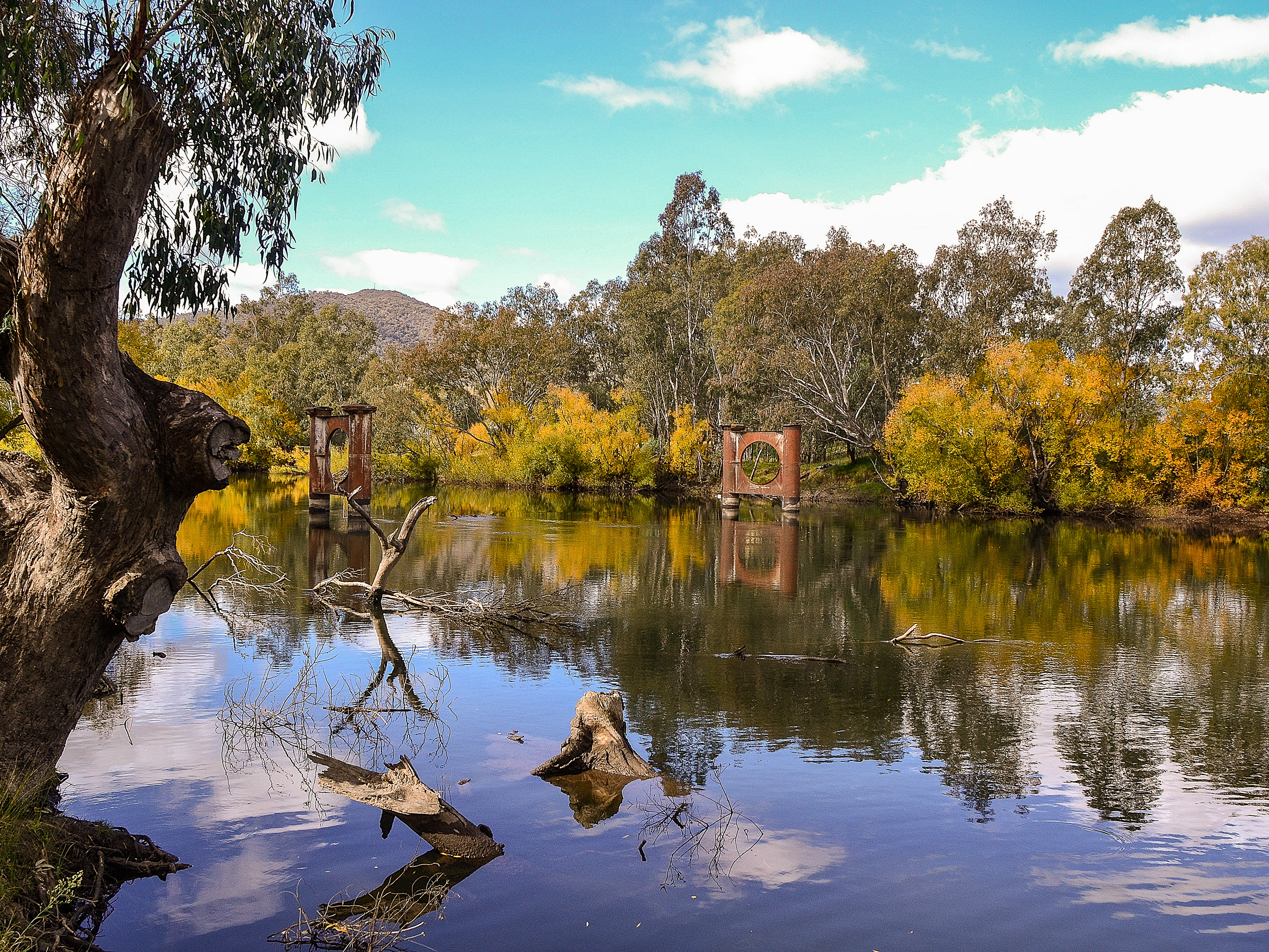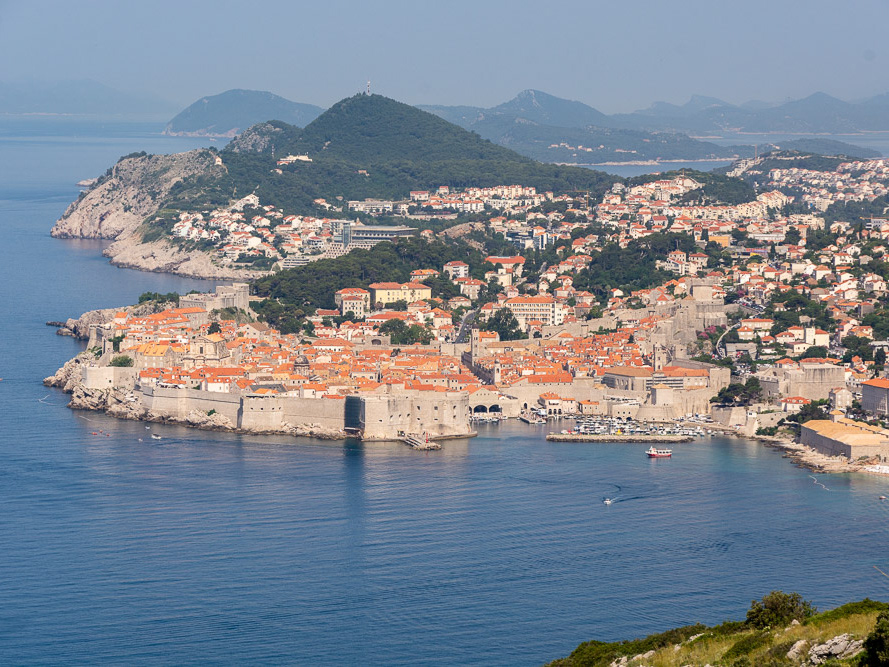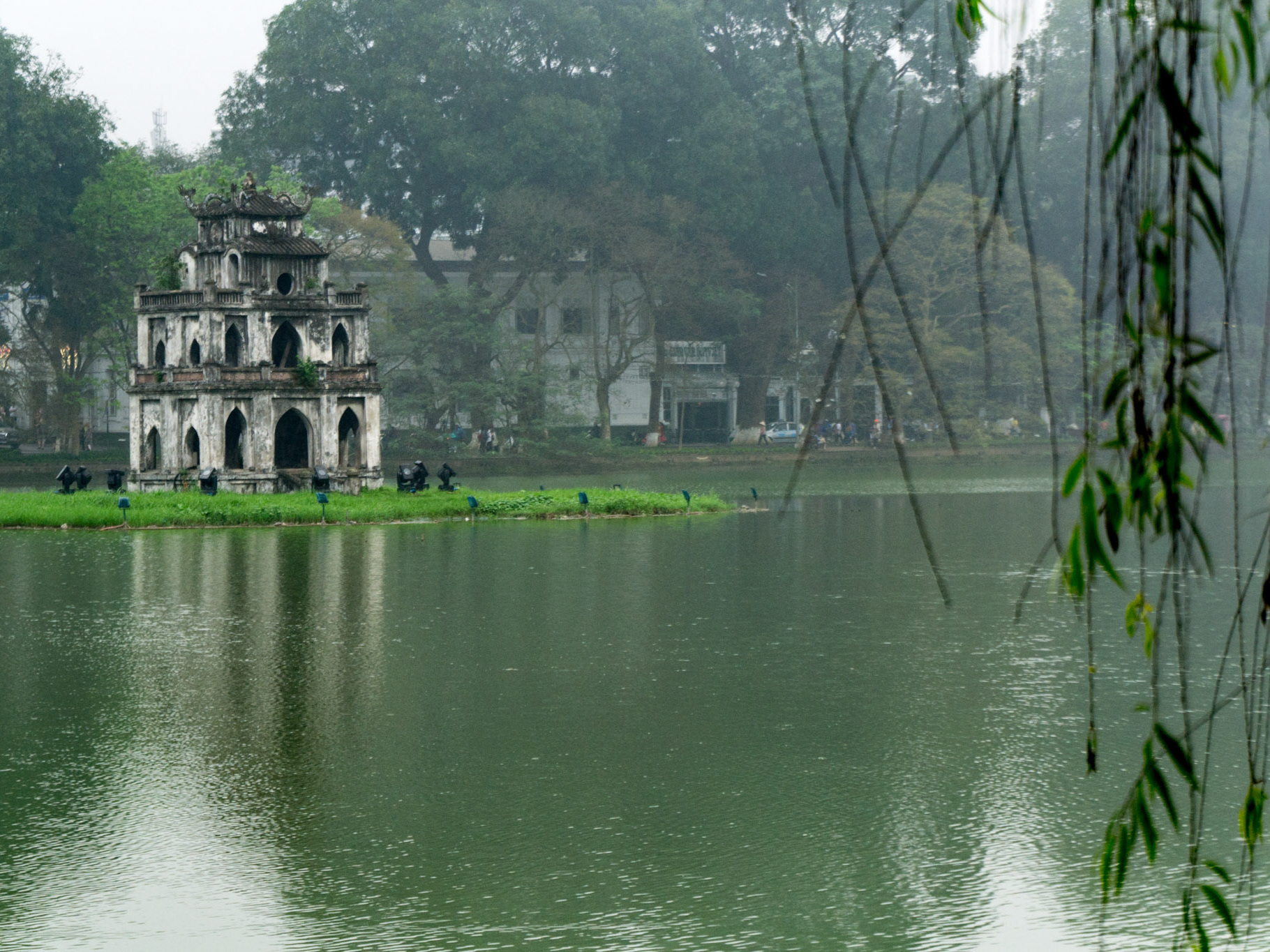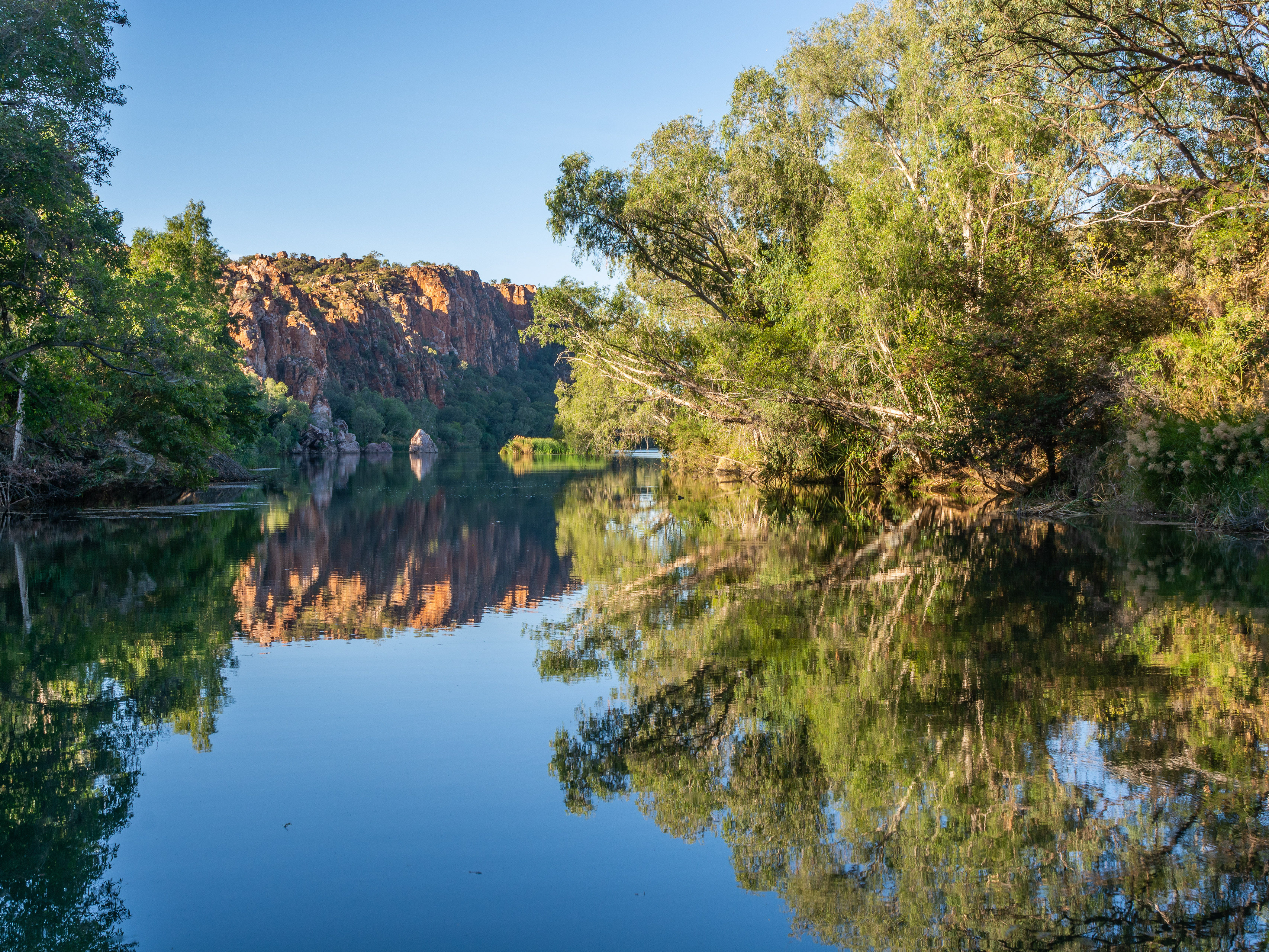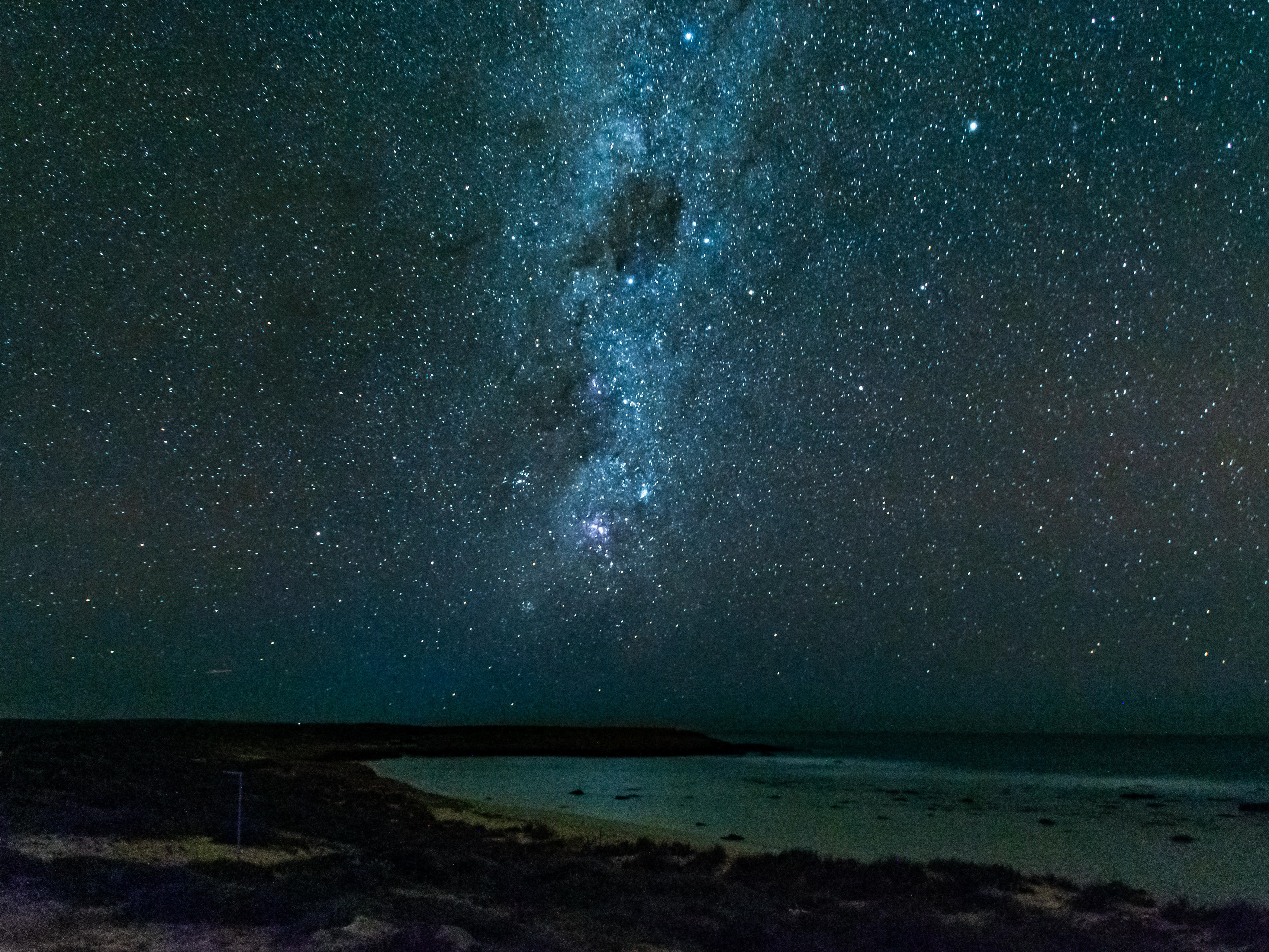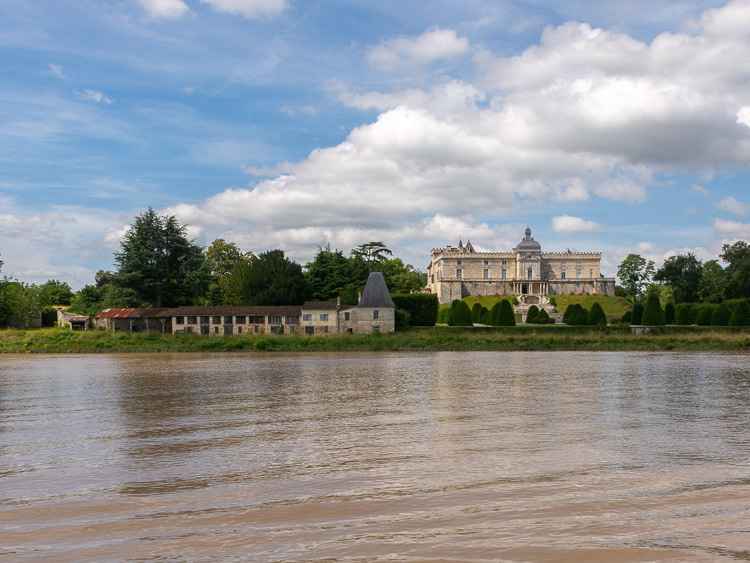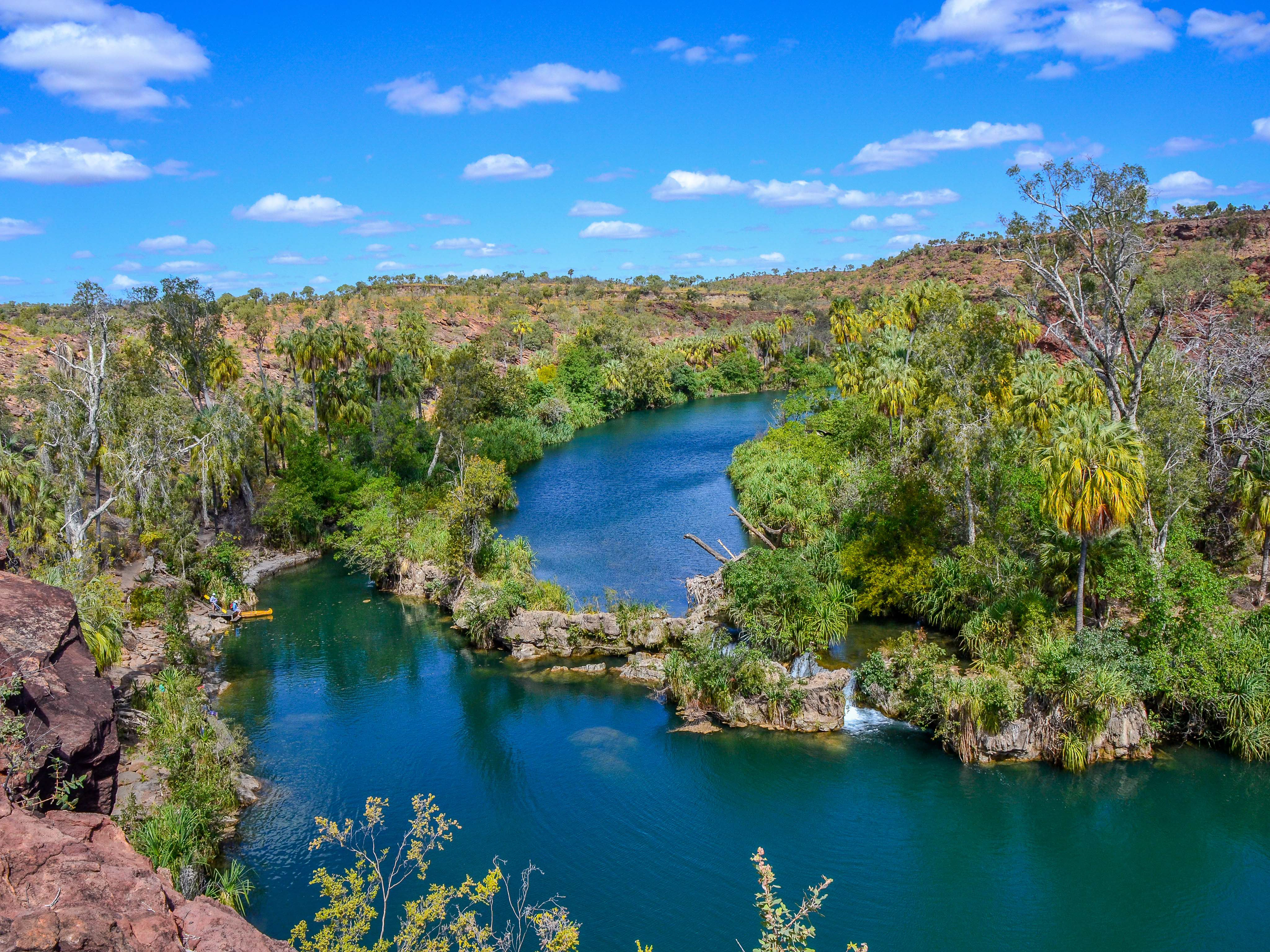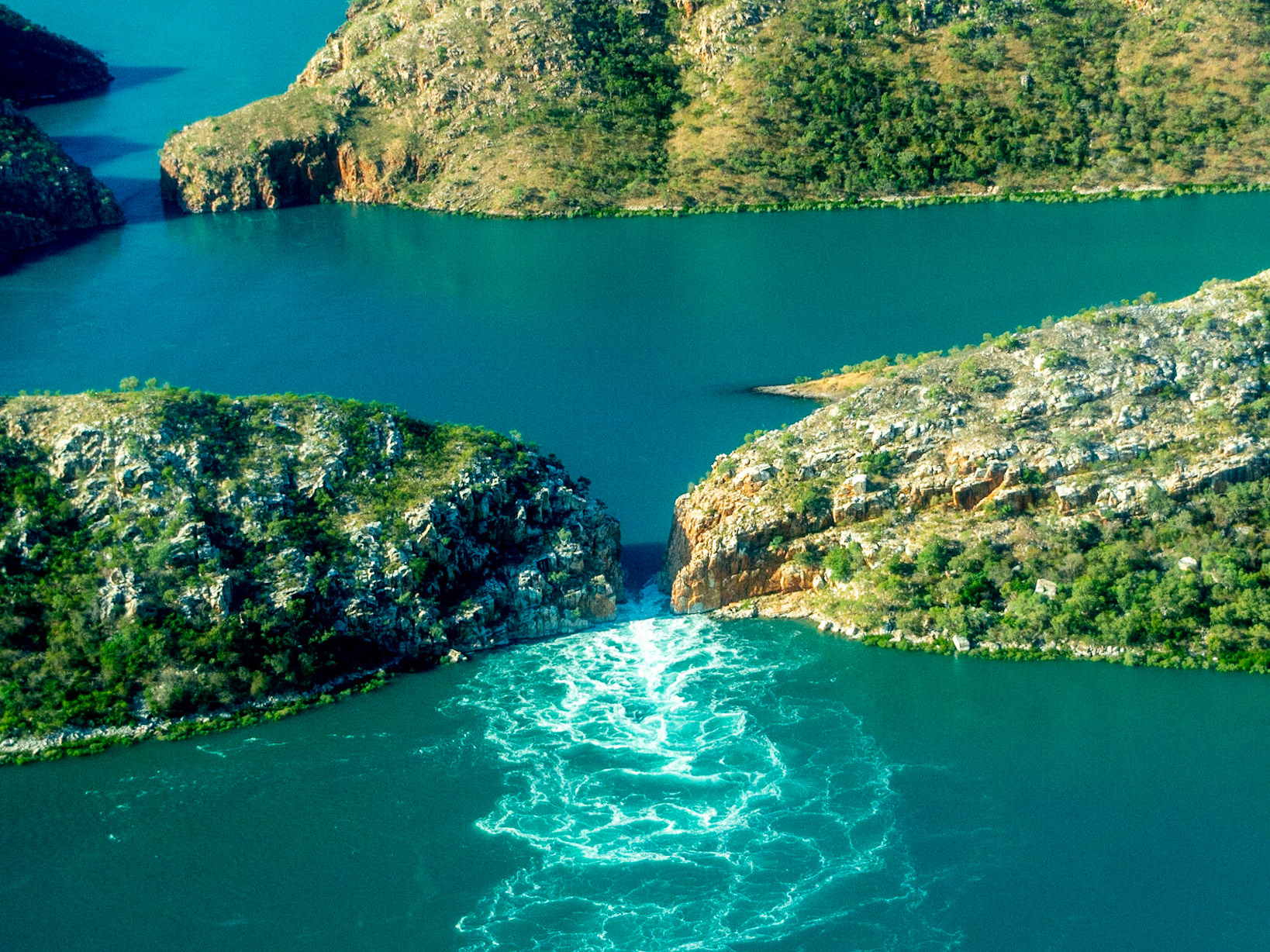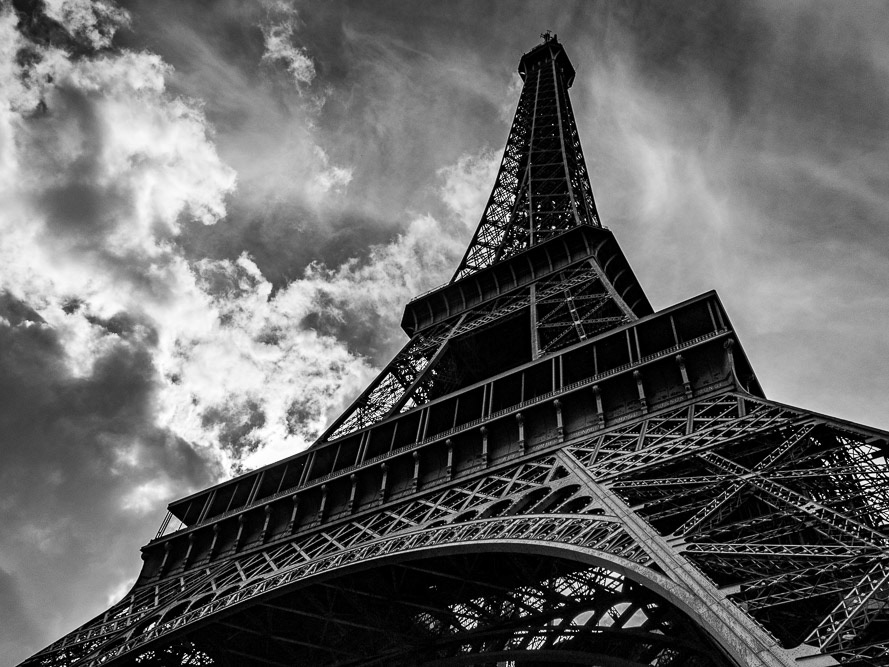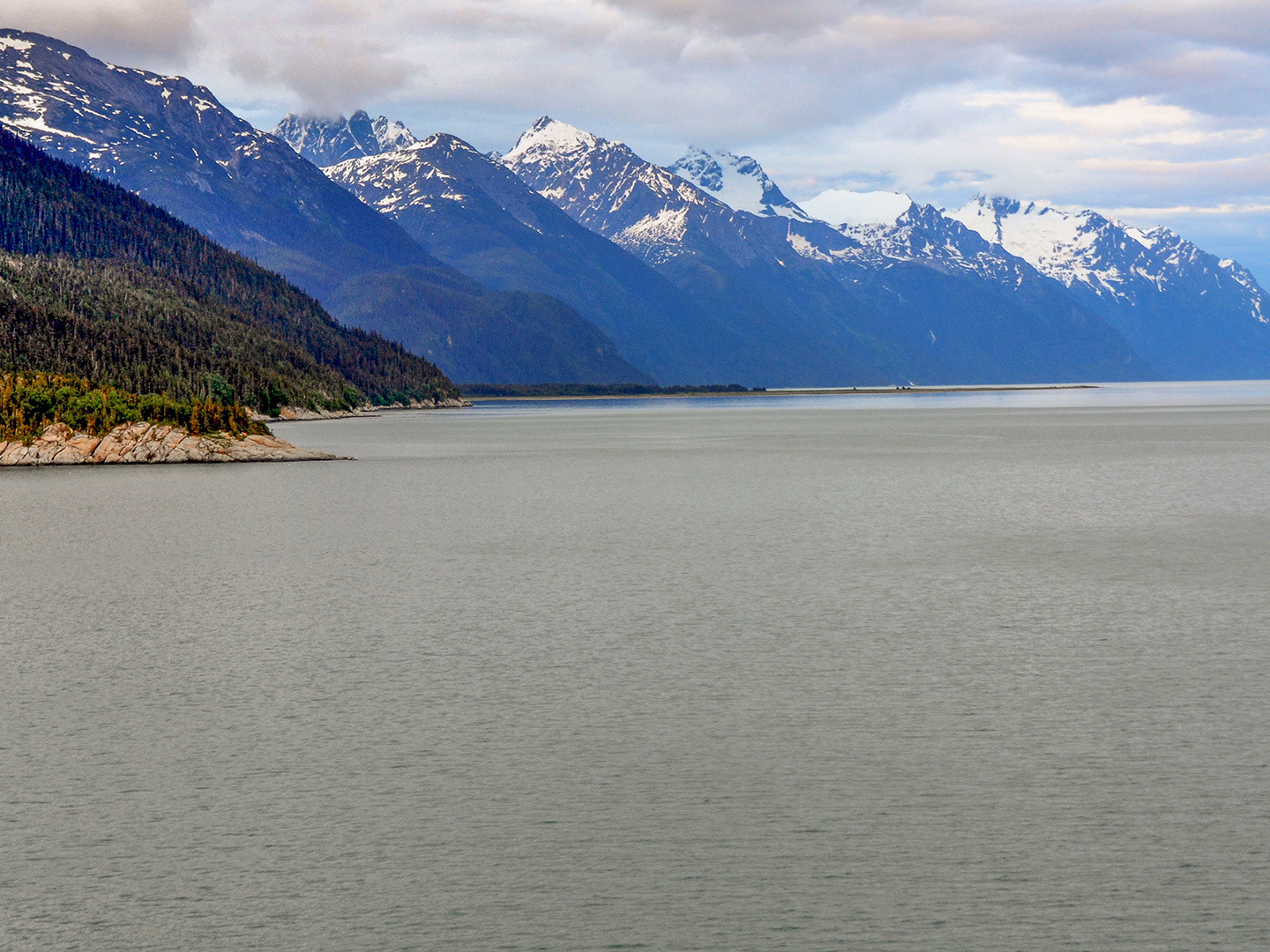Mykanos

Typical architecture and colours of the Greek Islands as we sail into Mykanos.

Hilltop villa.

Town centre and beach.

The town beach attracts a few sun worshopers.

Tiny neighbourhood churches appear around almost every corner.

Tourists from the cruise ship head for the town beach area.

A splash of colour in a neighbourhood plaza.

Alfresco dining and shopping in the narrow streets.

A a peek inside a local restaurant.

Drops of Art in the laneway.

These windmills an iconic symbol of Mykanos' rich past.

Blue hues of the Agean Sea accented on the trim of whitewashed buildings.

Crazy paved lanes lead past more alfresco dining

Moped ahead.

Washind day in this laneway.
Patmos

The Monastery of St John the Theologian overlooks the capital Chora.

The view over Chora from our cruise ship balcony.

Pretty in pink Vespa.

The churches are getting smaller.

Whitewashed villas step up the slopes.

Shopping time for a bargain.

Ahh... one of my favourite beans.

Layers of life on the rocky terrain.

Mills high on the hills of Patmos - the sails partially unfurled on one.
We visit the old fortress city and historic harbour of Rhodes (Rodos) and also Lindos, a famous archaeological site and a fishing village on the island.

Our arrival at the harbour where once stood the legendary Colossus of Rhodes.

The Fort of Saint Nicholas guards the Mandraki harbour.

Fortified walls surround the Medieval Old Town of Rhodes. Rhodes' nickname is The Island of the Knights, named after the Knights of Saint John of Jerusalem, who ruled the island from 1310 to 1522.

Part of the denfesive moat system which surround the walls of the Old Town fortress.

The d’Amboise Gate ahead as we head into the medieval fortress area of the Old Town.

Part of the fortified walls of Rhodes appear through the lush vegetation.


Defensive parapets guard entry points through the walls.

Hibiscus flower juxtaposed against the medeival walls.

Narrow cobbled laneways of the Old Town area.

Gargoiles protude form a medieval facade.

Medieval villas are remarkibly well preserved.

Emerging to a 20th century vision.

Market mayhem as tourists pass street stalls lining the narrow laneways.

Homeward bound past medieval villas on the treck back to our ship.

The Liberty Gate - A tight squeeze for modern transport.

Tourists cram the narrow lanes passing the Bell tower of The Panagia Byzantine Church,on the way to the Arcopolis of Lindos.

Taxi service (via mule) for those who don't wist to negotiate the steep climb to the Acropolis.

Stairs lead to the Medieval gate of the Acropolis of Lindos.

A Rhodian trireme (warship) cut into the rock at the foot of the steps leading to the acropolis.

Morning shadows retreat over the villageof Lindos below as we climb towards the Acropolis.

Medieval ruins as we climb to the Acropolis.

Staircase of the Propylaea (Monumental Gateway)

Ruins of Church of St. John on the Acropolis, a 13th Century Greek Orthodox church.

The Doric temple of Athena Lindia is perched atop of the Acropolis of Lindos.

St Paul's Bay, allegedly the apostle landed here and sheltered during a storm.

The view beyond massive fortress walls, built on the acropolis by the Knights of St John to defend the island against the Ottomans.

The view from the Temple of Athena is spectacular.

Rocky cliff face disappear into the depths of clear turquoise waters of the Agean sea below.

Ever present souvineer shops entice tourists along the climb to the Acropolis.
Agios Nikolaos, Crete.

Bayside terraces and cafes line the shore of Agios Nikolaos in eastern Crete.

Early morning beach goers catching some rays on the town beach sunbeds.

Agios Nikolaos small boat marina and local fishing vessels.

The Louis Crystal awaits at the dock to ferry us to our next stop, Santorini.

The Sea-Land", sculpture of Kitroplatiais.

The Abduction of Europa sculpture on the foreshore of the port.

The deep blue colour of Lake Voulismeni give a hint to its depth of 64m.

Small boats anchored in Lake Voulismeni, a former small sweetwater lake now connected to the sea.
Santorini

Ahead lies Fira the main town of Santorini. Just a white line on top of the cliff face of the collapsed volcanic caldera.

Rugged cliffs and the deep blue waters of this remnant volcanic caldera are typical of this region.

The terminus for ship passangers as they arrive via launch from the mother ship.

A view eastward towards Oia along the collapsed caldera face.

Tourists congregate in the square of a Greek Orthodox church of Panagia, Oia.

Armeni Village - Luxury Santorini accommodation.

Three diffreent churches in this one area pf Oia. Church of St Geprge in the left hand background.

Colours of a Red Hot Poker complement the church doors and contrast the white and blue hues.

In the frame - Church of St George, Oia Santorini.

A terrace with million dollar views.

Strolling by another of Oia's unique churches with whitewashed walls, blue copola and stone pitched facade.

Windmill with a view.

Crowds begin to gather on the western end of Oia waiting for sunset.

The moment we've all been awaiting, the colours of sunset over the Agean Sea.

Fira, the main city of Santorini sits on the edge of the 400 metre high caldera on the western edge of the semi-circular island of Thera.
Athens
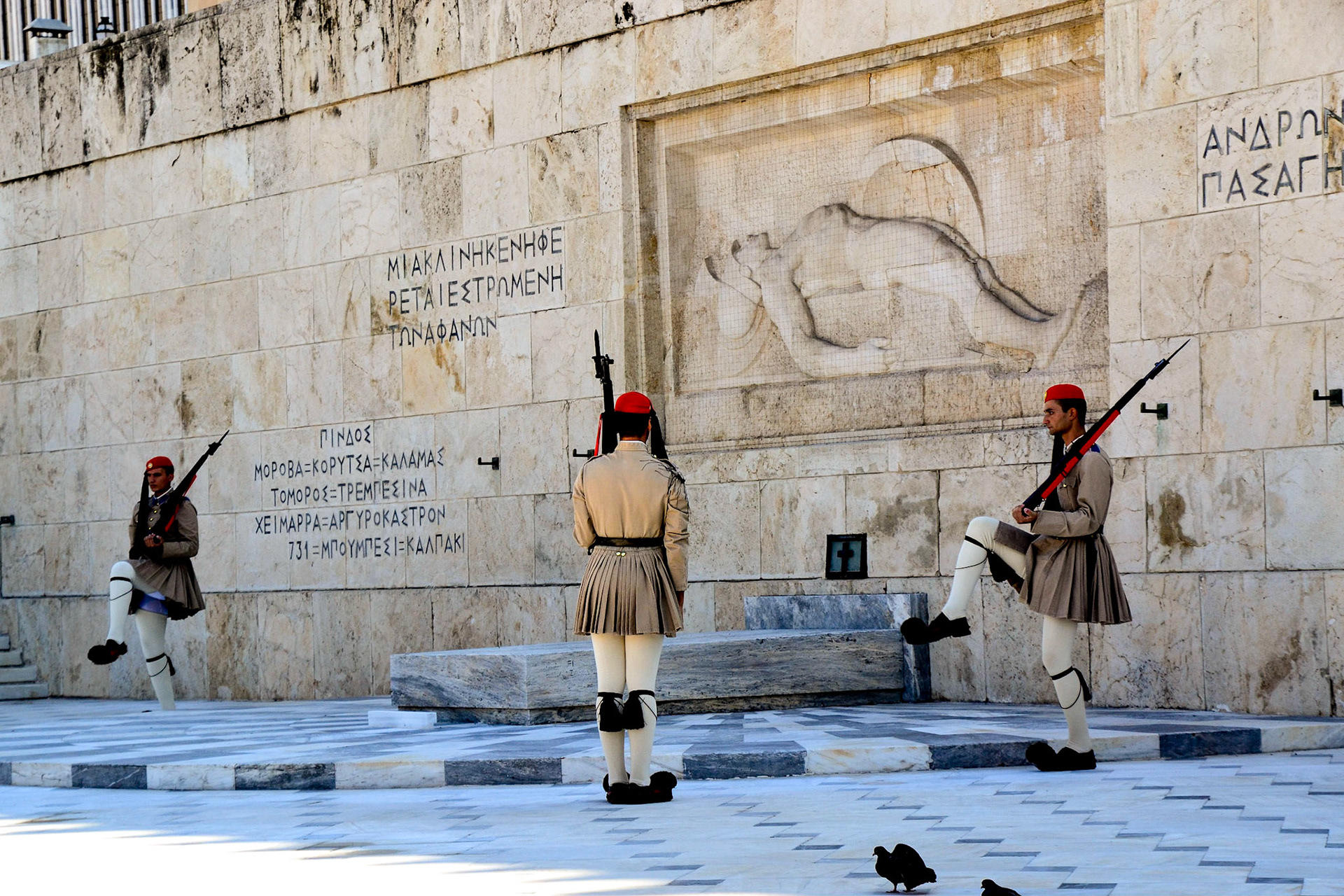
Tomb of the Unknown Soldies in Syntagma Square, in front of the Old Royal Palace.
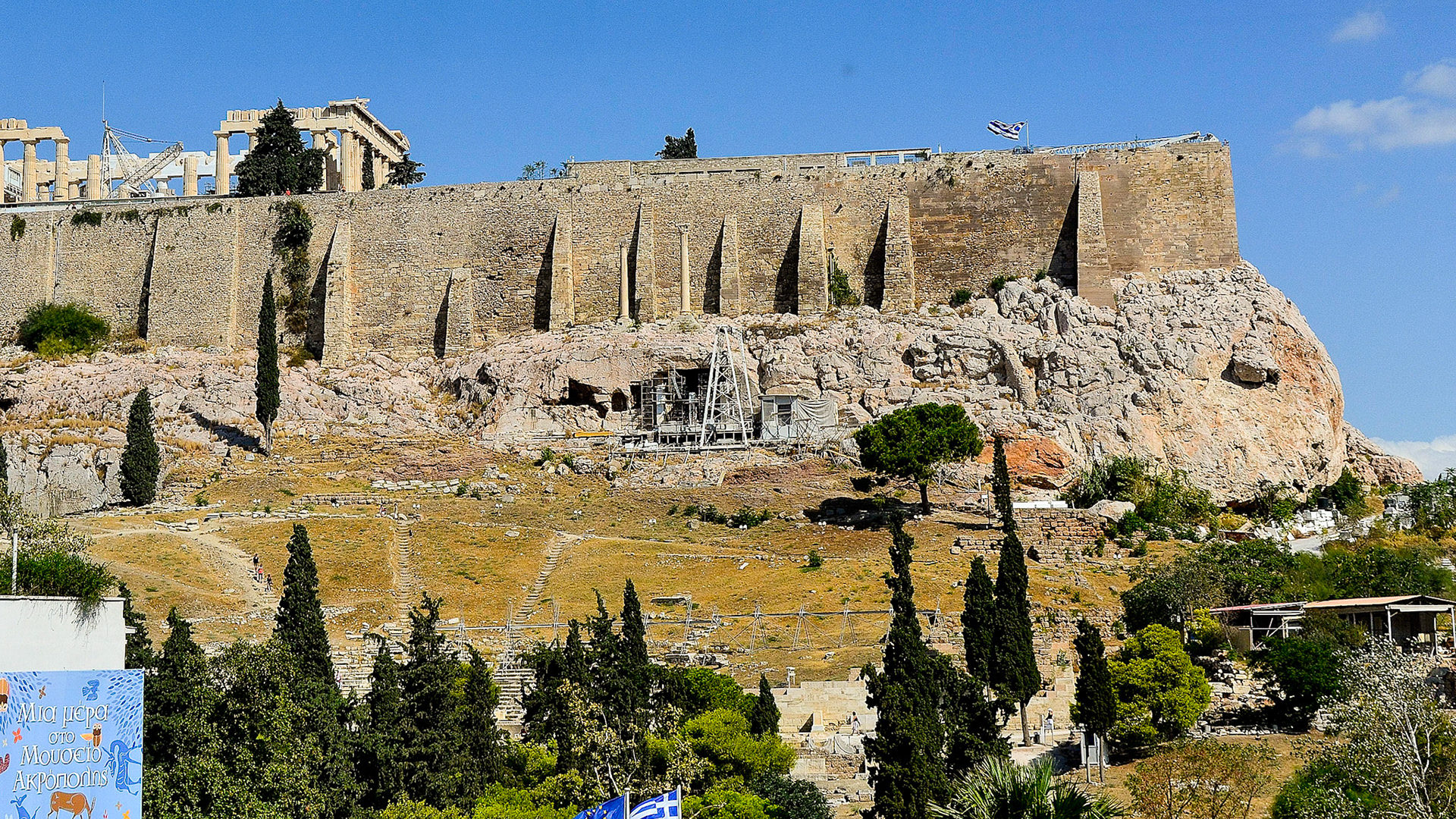
Surrounds of the Acropolis
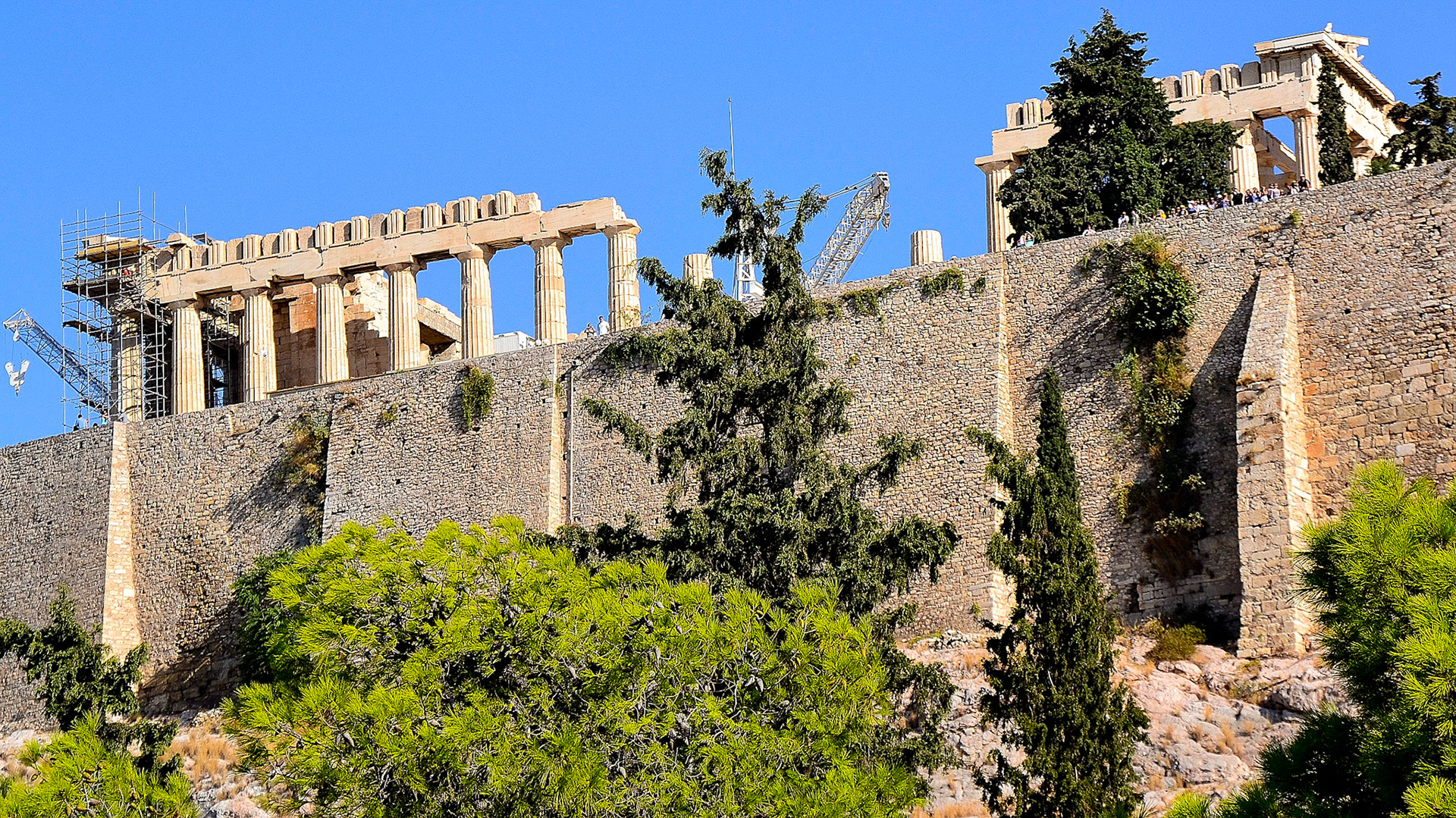
The retained embankment of the Acropolis, an engineering feat of ancient times.
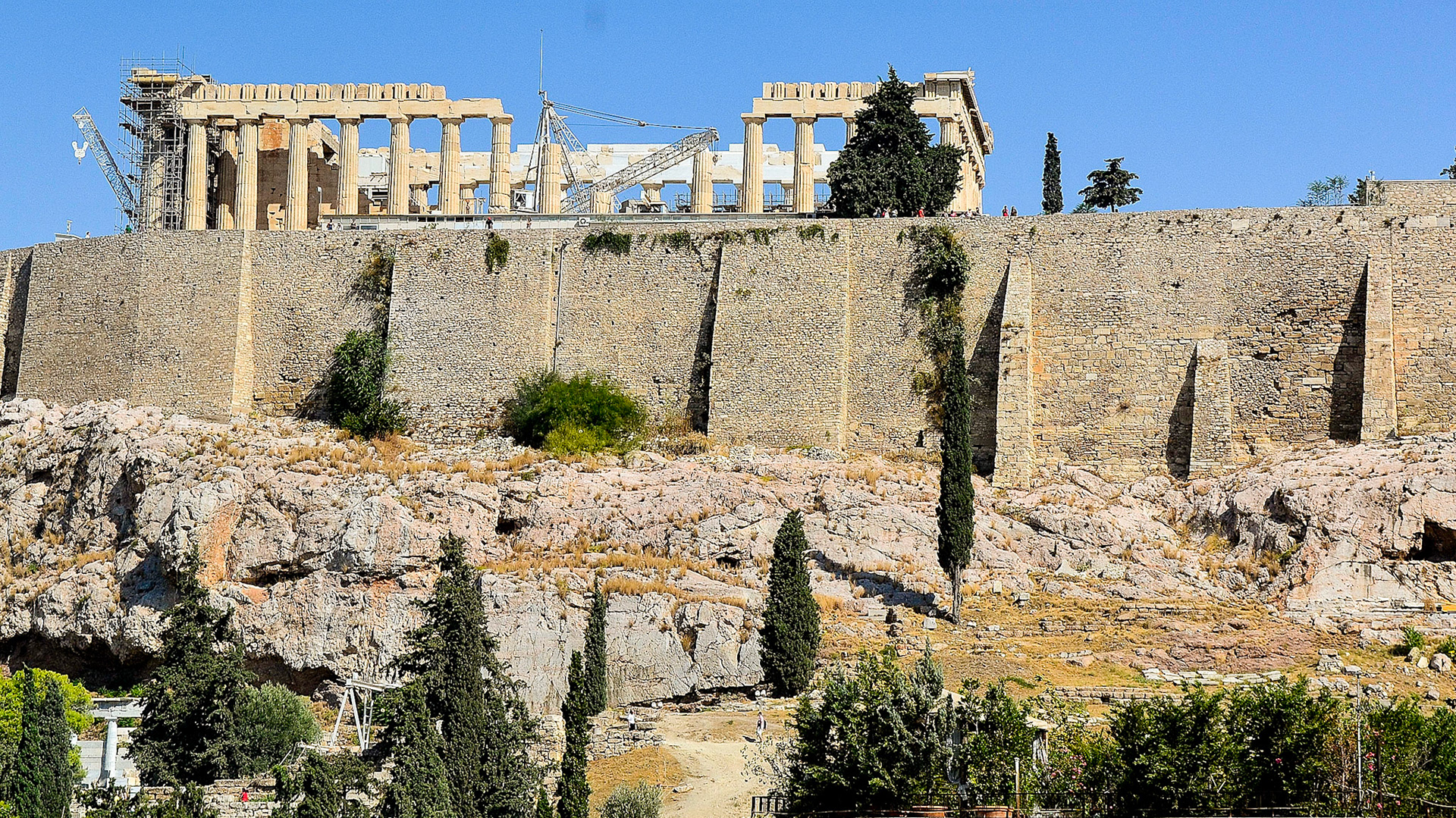
Surrounds of the Acropolis

The Acropolis (reflected in the facade) museum, built to house artifacts found on the rock and on the surrounding slopes.
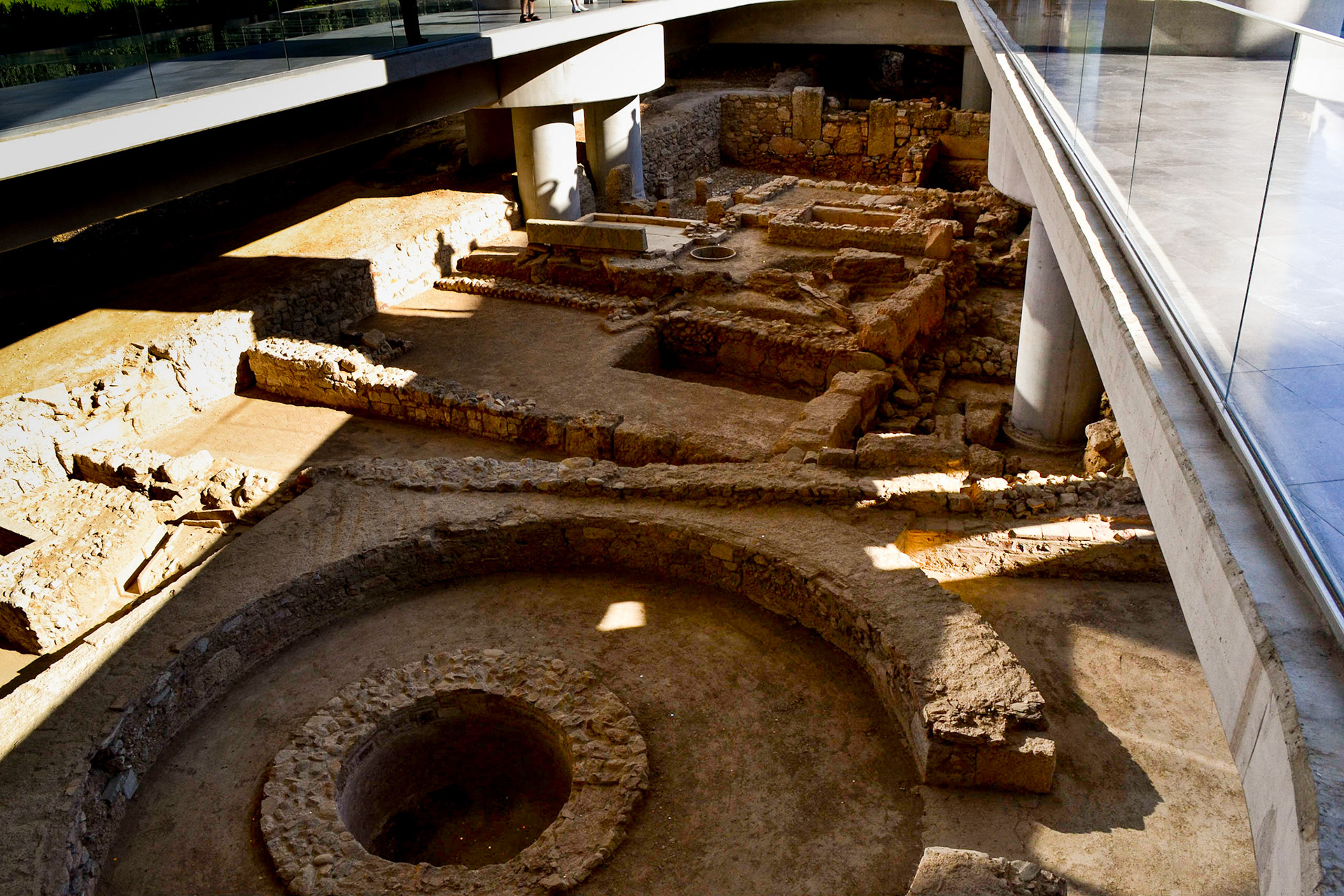
The museum also lies over the ruins of a part of Roman and early Byzantine Athens.
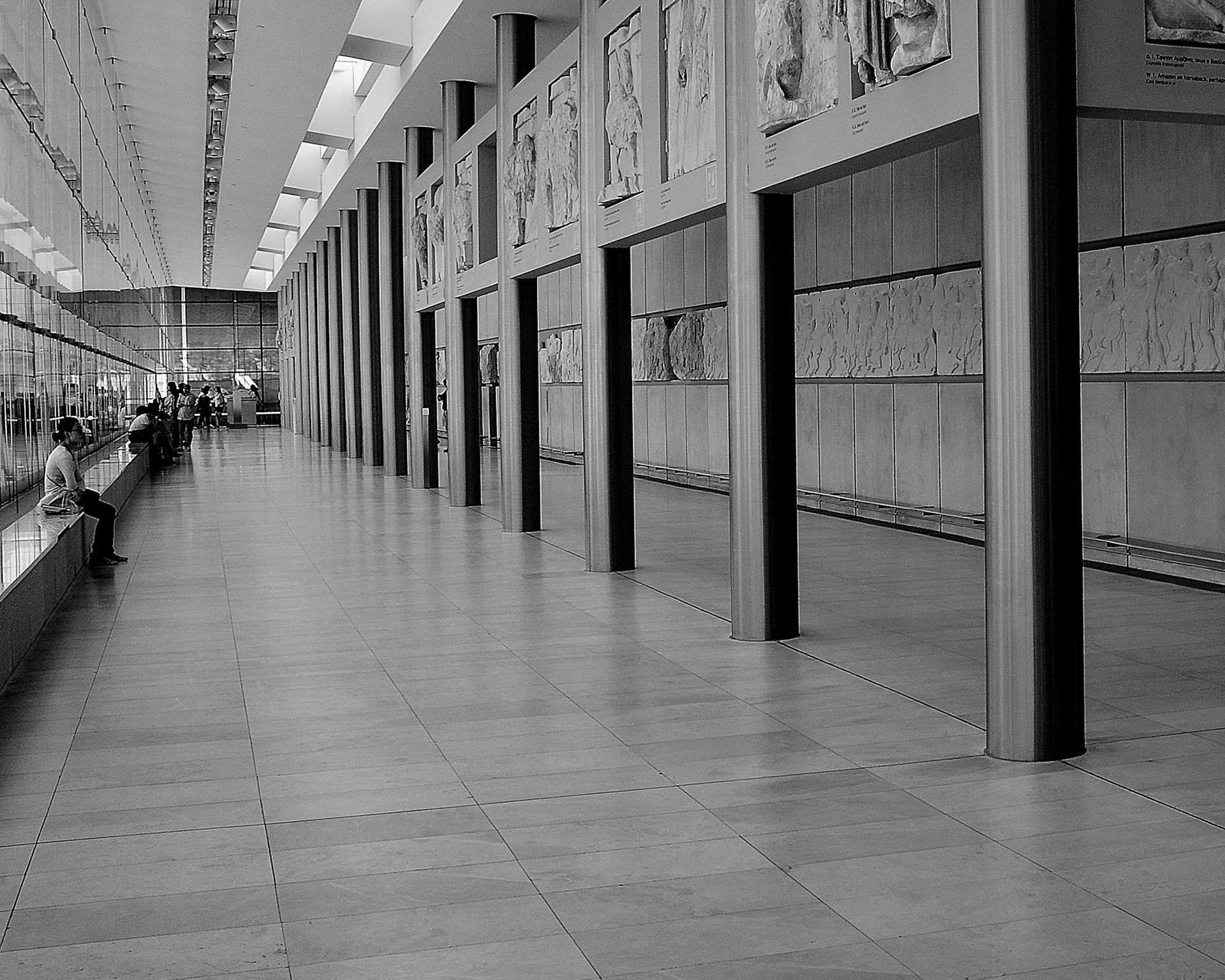
Acropolis Musuem
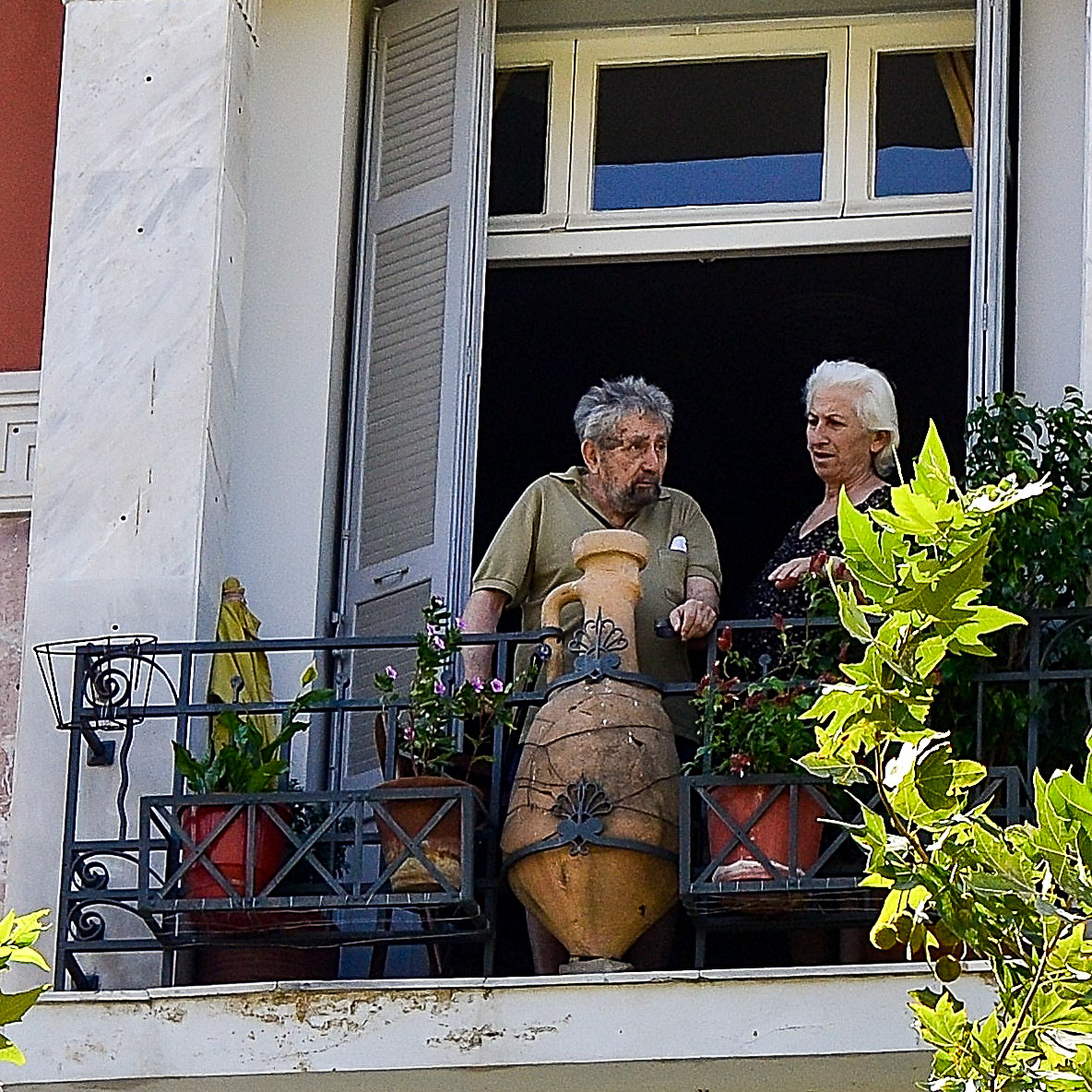
Athenians - Watching the world go by.
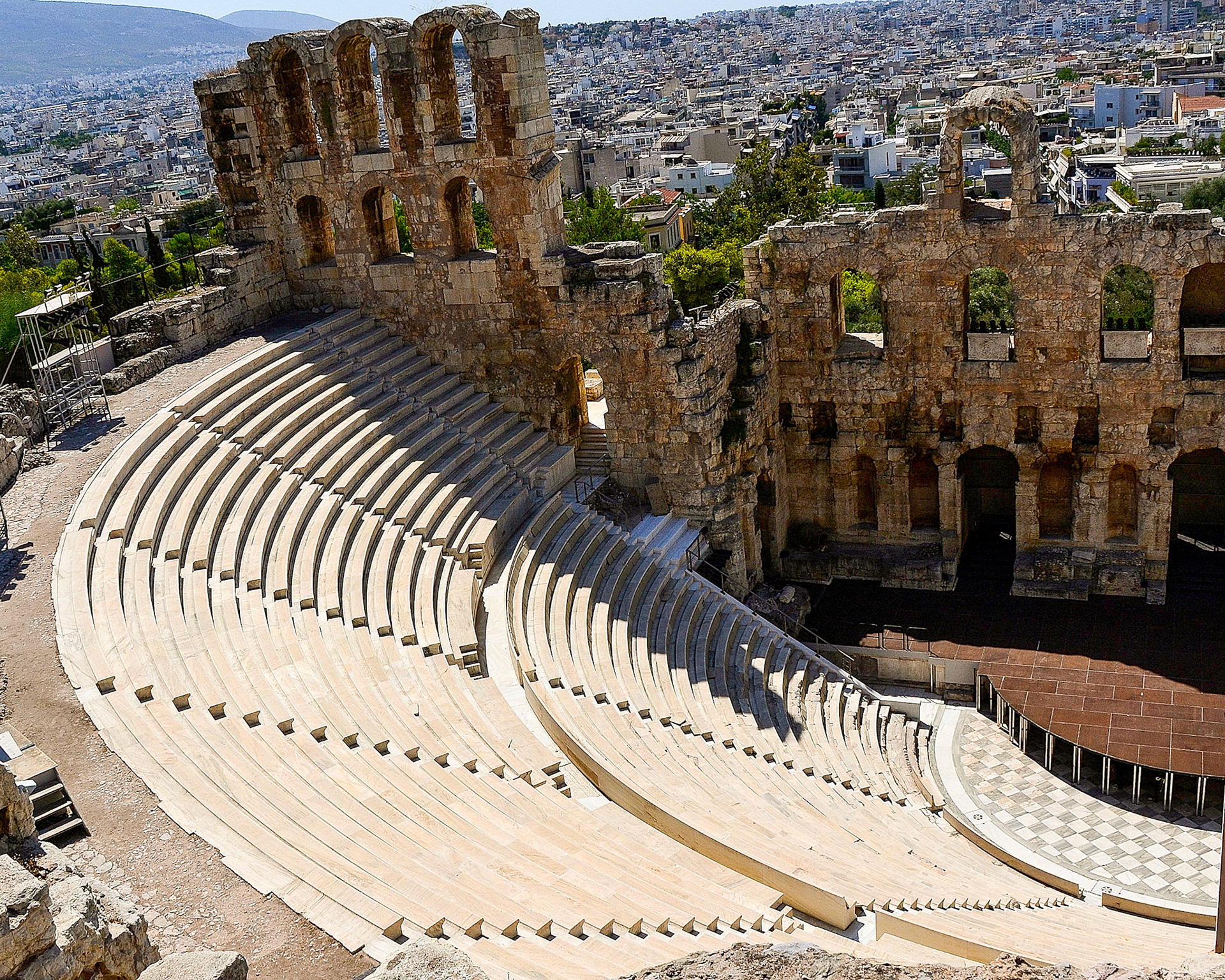
The Odeon of Herodes Atticus on the southwest slope of the Acropolis. The building was completed in 161 AD and then renovated in 1950.

It is the main venue of the Athens Festival, running from May through October annually.
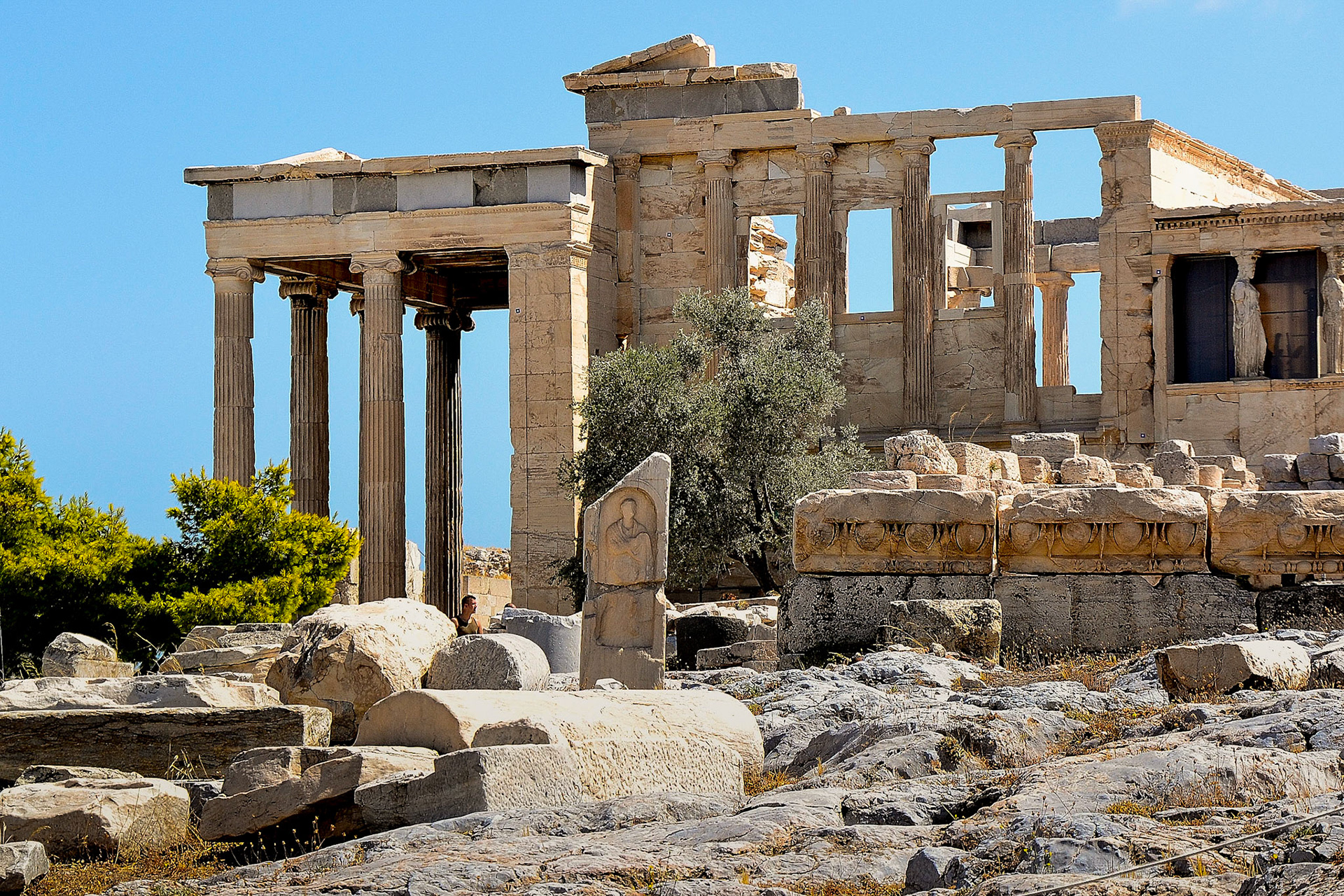
Erechtheion, an ancient Greek temple on the north side of the Acropolis dedicated to both Athena and Poseidon
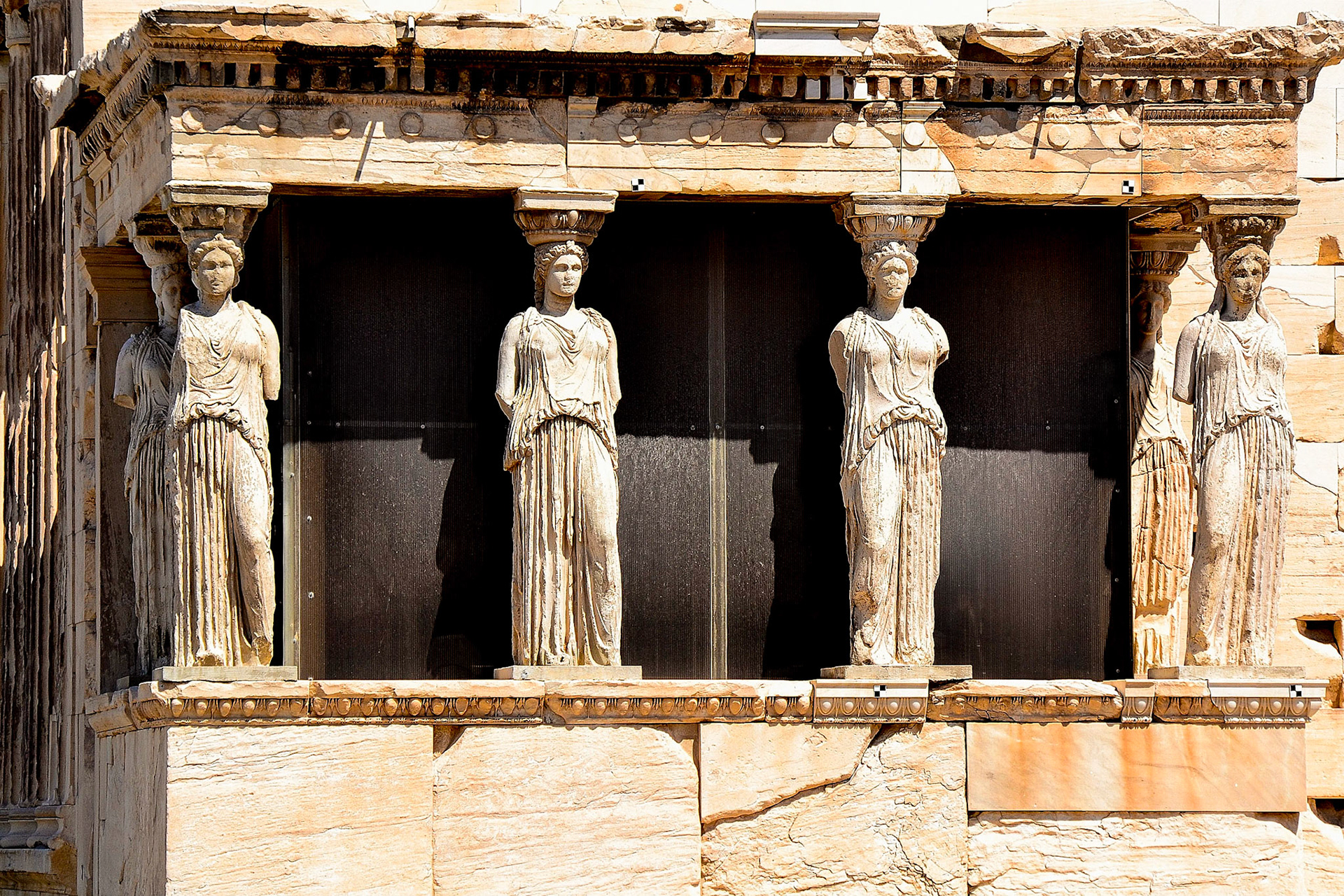
The Porch of the Caryatids, Erechtheion.

Erechtheion, an ancient Greek temple on the north side of the Acropolis dedicated to both Athena and Poseidon.
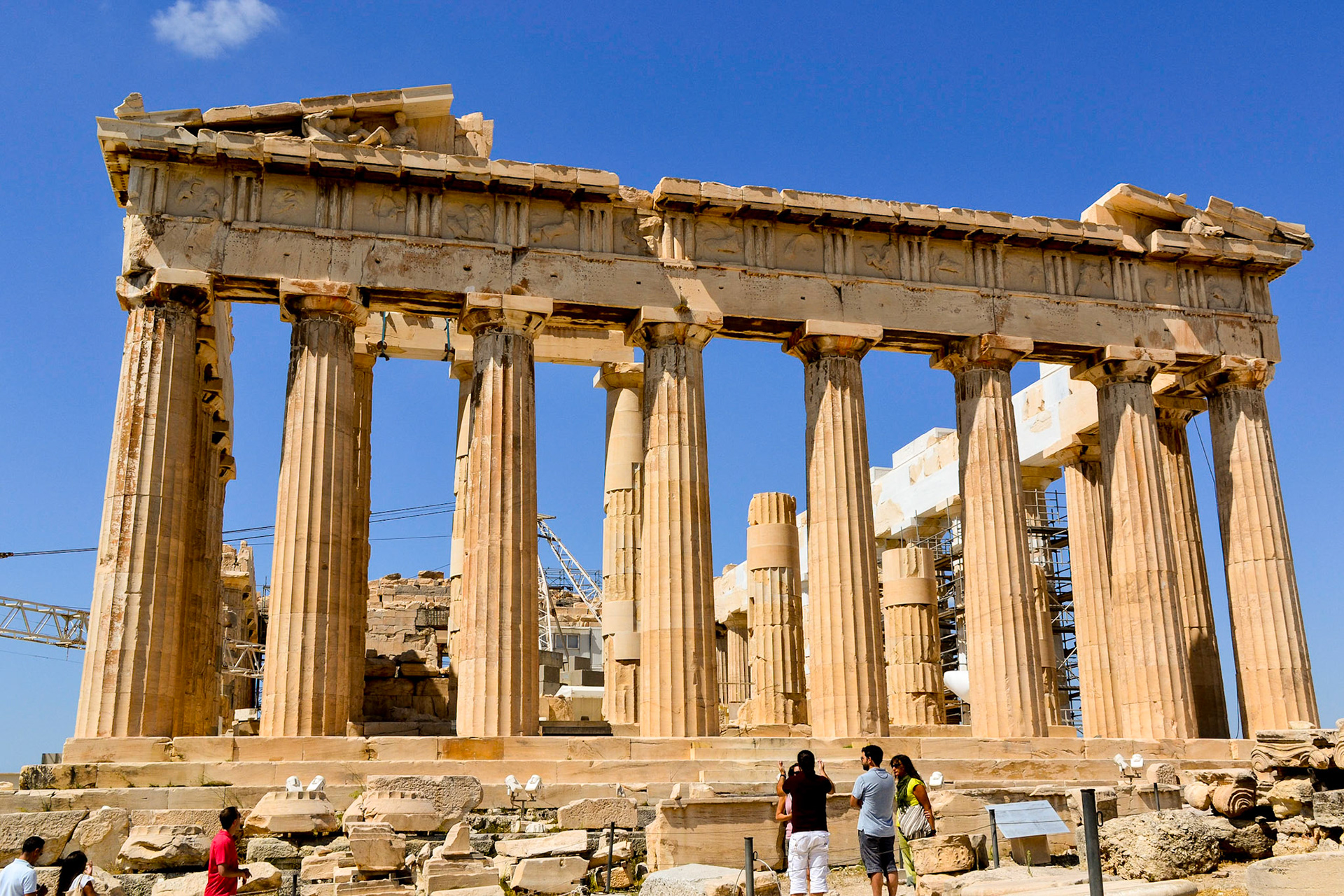
Eastern end of the Parthenon.

Part of the east pediment still found on the Parthenon (although part of it, like Dionysos, is a copy)
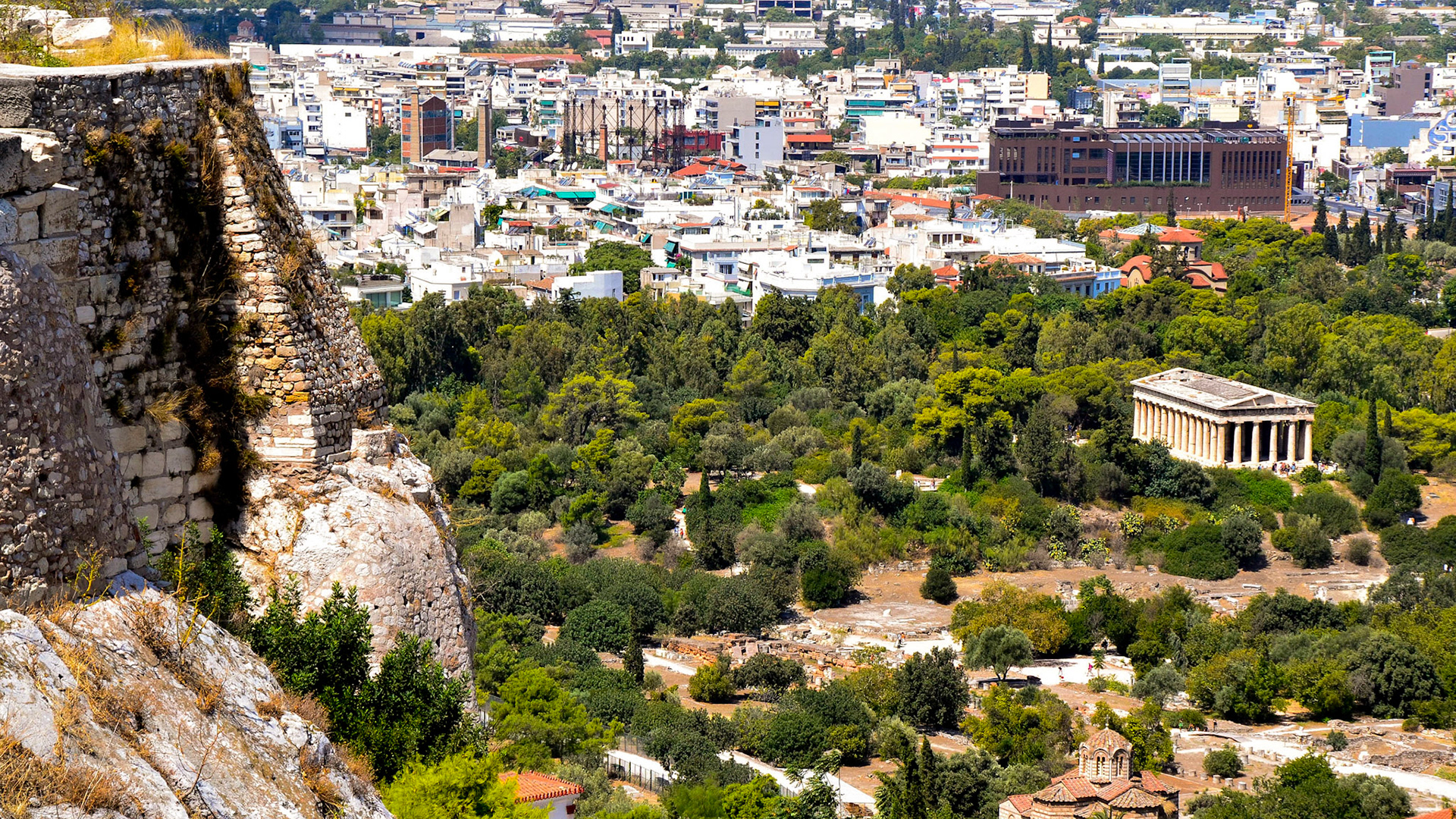
View of the ancient Agora from the Parthenon. The temple of Hephaestus on the right.
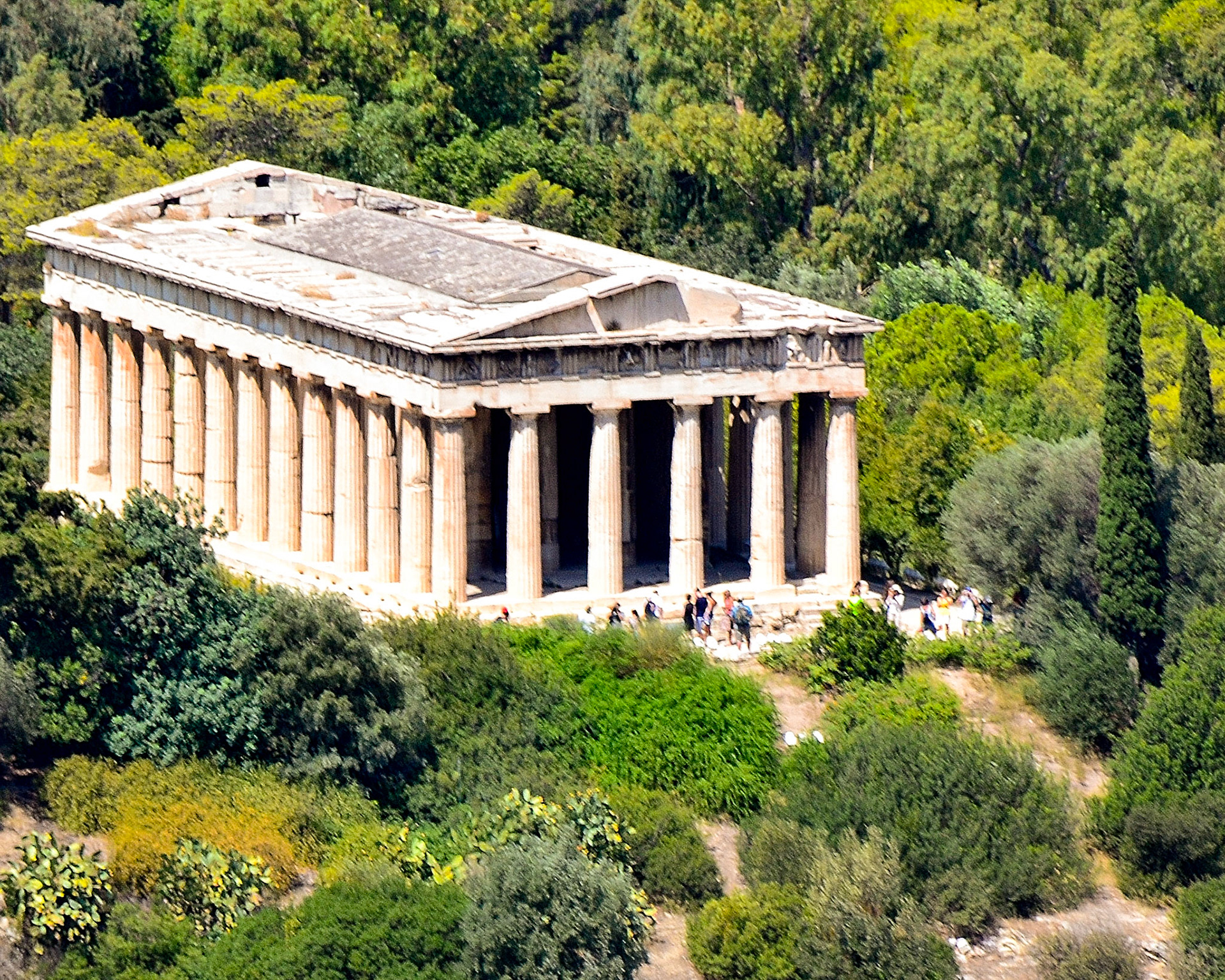
The ancient temple of Hephaestus in the Agora.
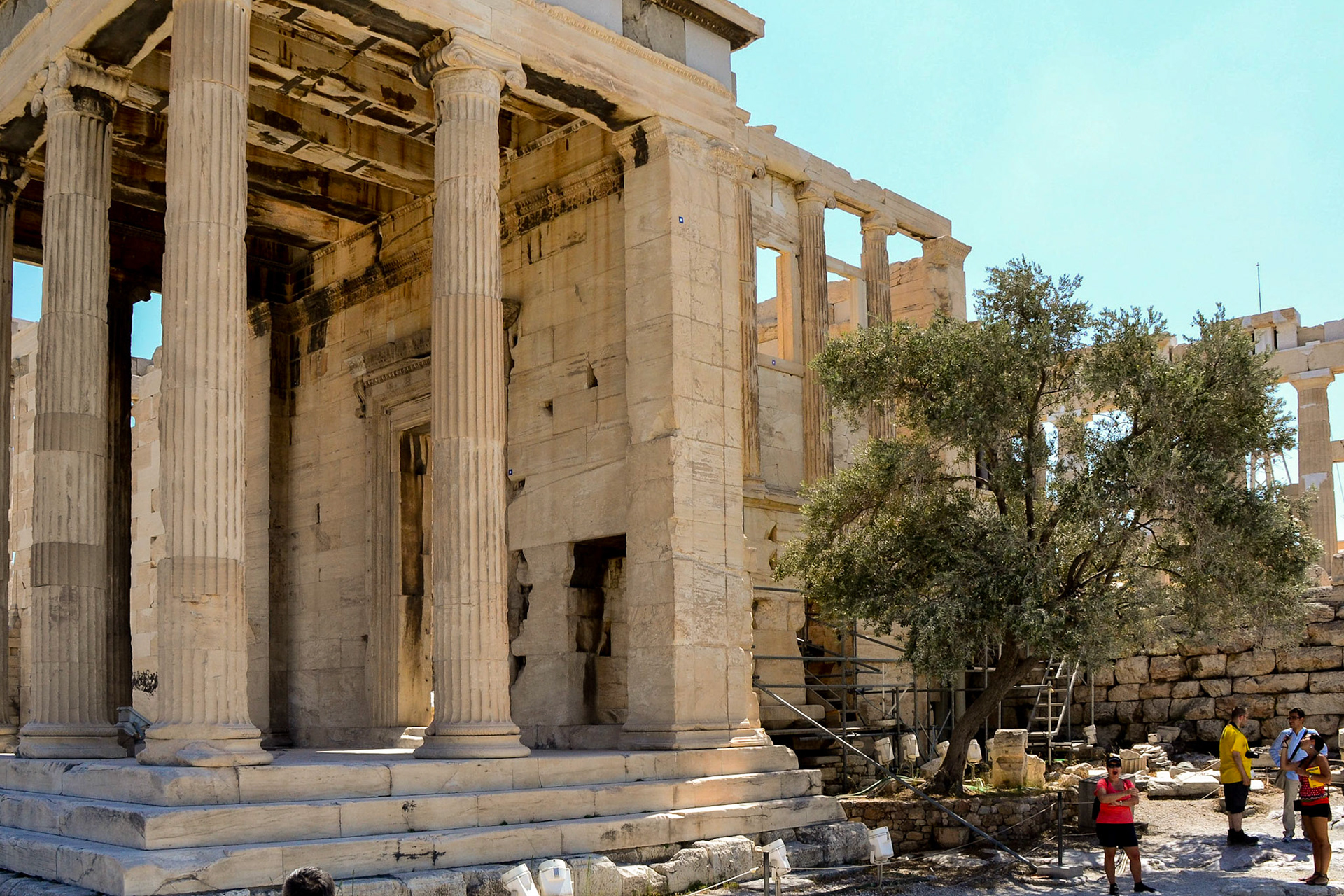
Waiting in the shade by the columns of the Erechtheion.

Ascending the stairs to the Propylaea, the monumental gateway to the Acropolis,
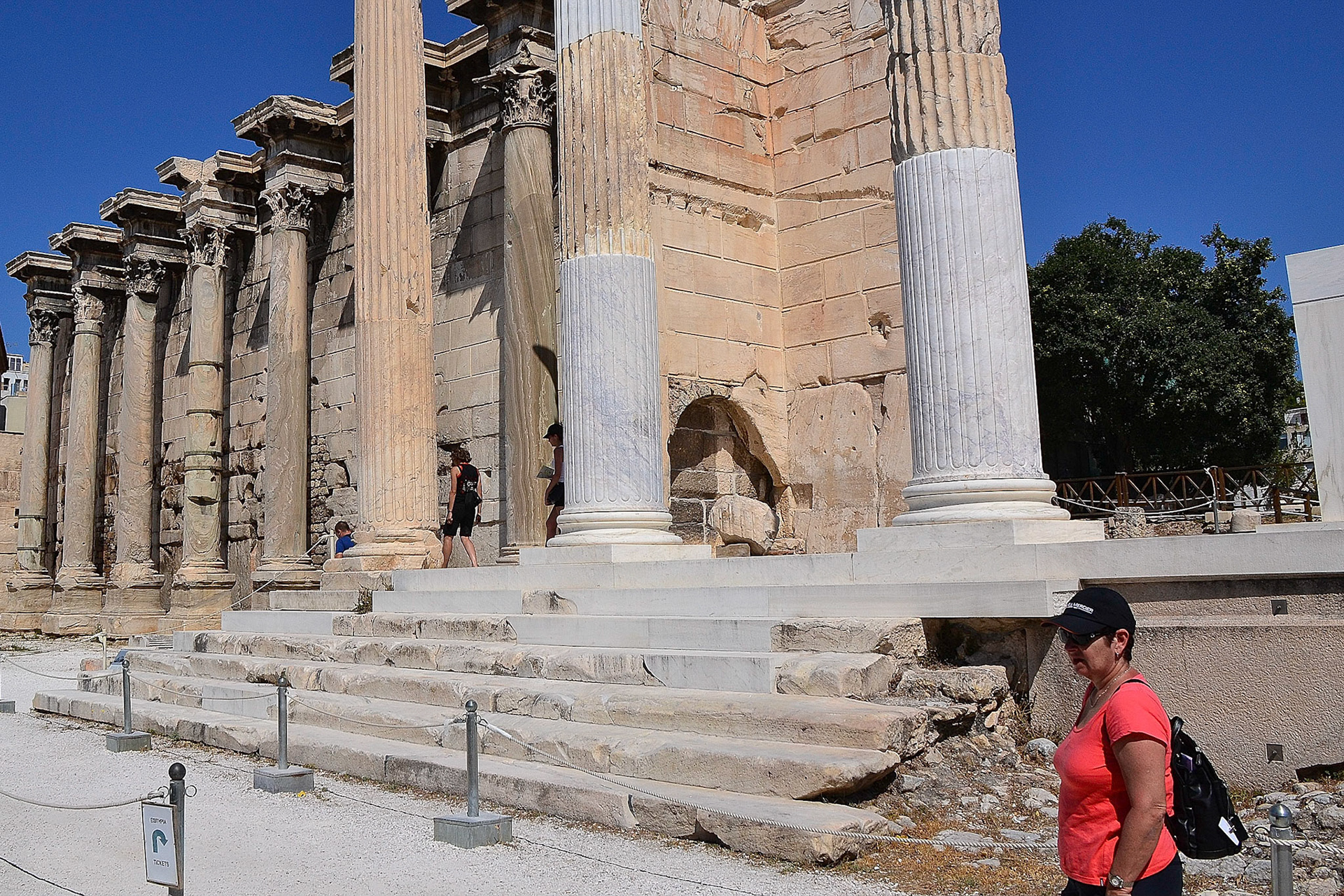
The west wall of the Library of Hadrian. Created by Roman Emperor Hadrian in AD 132 on the north side of the Acropolis.
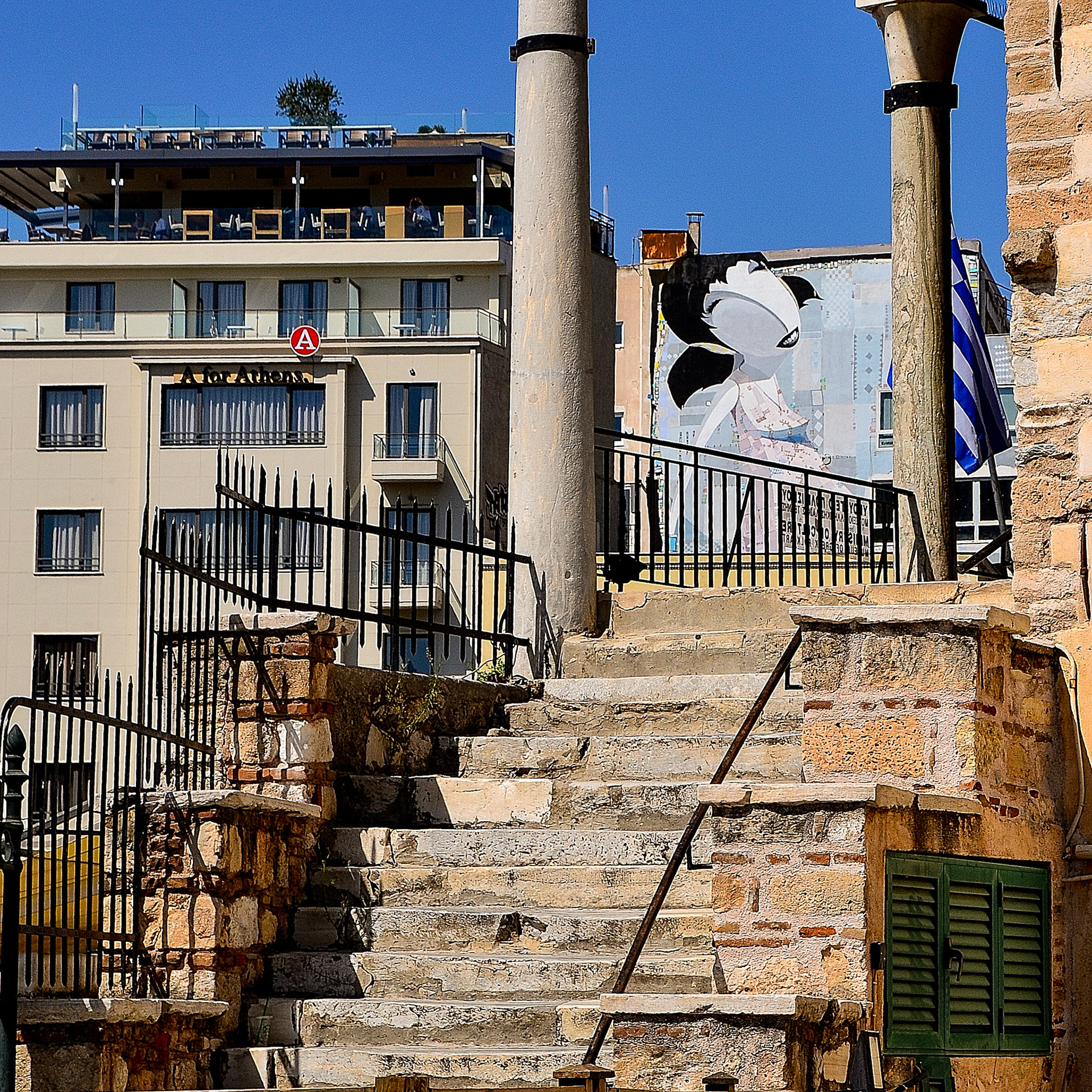
Juxtaposition - old vs new.

The temple of Hephaestus
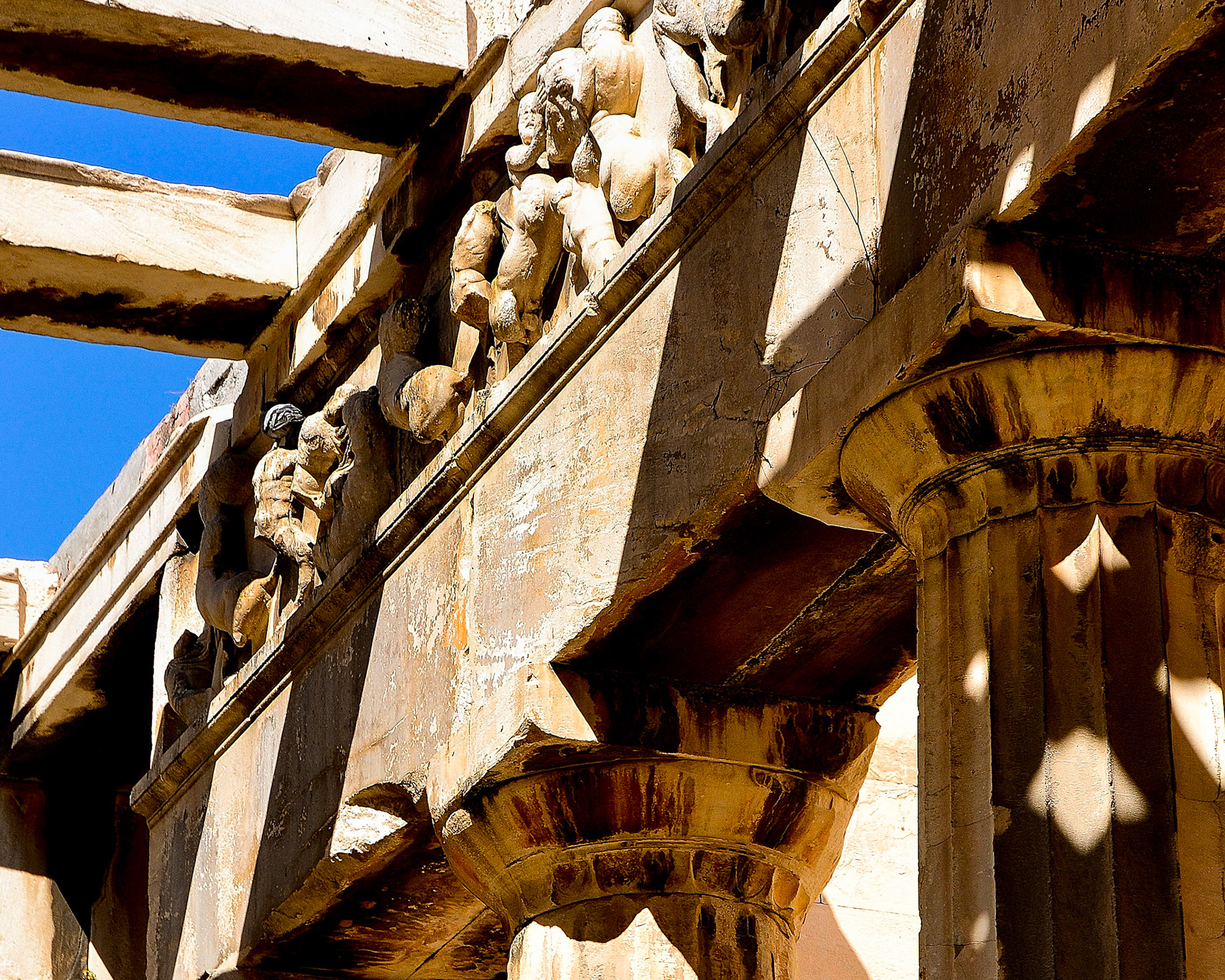
The temple of Hephaestus - ancient columns and beam construction.
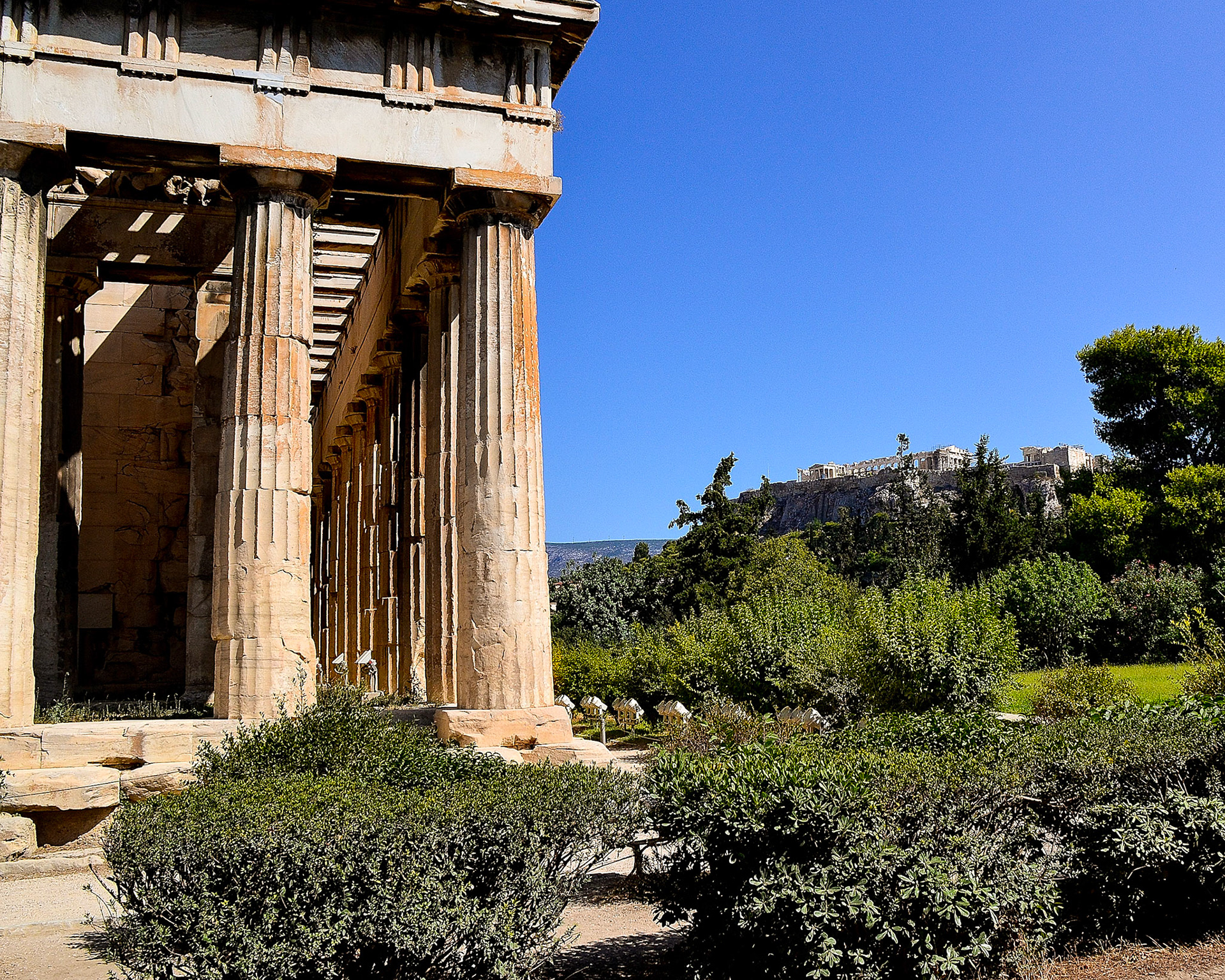
The Parthenon dominates the skyline from atop the Acropolis.

View of the ancient agora from the temple of Hephaestus. The Acropolis dominates in the background.

Church of the Holy Apostles, it was the first significant church of the middle Byzantine period in Athens. Significant that it has survive intact since its foundation, and for its architecture:
The Ruins of Ancient Olympia and Delphi

Ruins of the Temple of Hera in the Sanctuary of Olympia.

Crypt - the arched way to the stadium.

Looking down on the ancient olympia stadium.

Ruins of the Palaestra at Olympia.

Ruins of the Leonidaion within the Sanctuary of Olympia

Artifacts in the Archaeological Museum of Olympia, one of the principal museums of Greece.

Statue of Hadrian, a Roman Emporer fron 117-138, known for Hadrian's wall in Britian.

Hermes and the Infant Dionysos

Iron helmets

The Pediment of the Temple of Zeus.

The Nike of Paionios is an ancient statue of the Greek goddess of victory.

Artifacts in the Archaeological Museum of Olympia, one of the principal museums of Greece.

The Tholos of Delphi, a circular temple.

Section of polygonal wall at Delphi, behind pillars from the Athenian Stoa.

Ruins of the ancient temple of Apollo at Delphi, overlooking the valley of Phocis.

The reconstructed Treasury of Athens built to comemorate their victory in the Battle of Marathon.

Ruins of the ancient temple of Apollo at Delphi, overlooking the valley of Phocis.

The Theatre at Delphi from above the top row of seating.

Looking down over the Theatre of Delphi from the stadium.

The semi-circular end of the stadium of Delphi carved into the side of the mountain high above the theater.

Looking down the stadium of Delphi with the terraced seating carved out of the side of the mountain.

The far end of the stadium of Delphi.

The "Twins" of Argos in the Archaeological Museum of Delphi.

Torso sculptures L to R: Apollo, Artemis and Leto and golden artifacts.

The Sphinx of Naxos.

The Dancers of Delphi, also known as the Acanthus Column,

Statue of Agias of Pharsala, a Greek poet.

